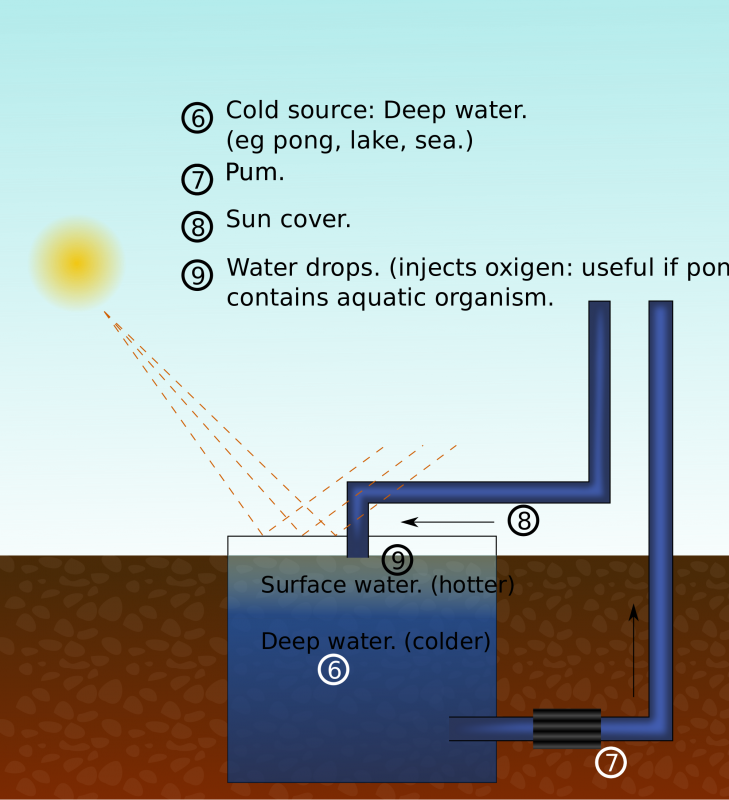Using Deep Cold Coastal Seawater for Cooling
Published on by Water Network Research, Official research team of The Water Network in Technology
Several coastal cities located in warm climates have a deep seafloor within less than 50 miles of the coastline. This cold seawater offers numerous benefits.
By Harry Valentine

Source: Wikimedia Commons
The Toronto Precedent
Several years ago, the City of Toronto’s water department in Canada installed an insulated water source pipe to access cold potable water from near the bottom of Lake Ontario. During the northern summer and prior to arriving at the water purification plant, that cold water passes through a heat exchanger to provide district cooling to several office towers located in the business district.
A cubic unit of that water provides over 3,400 times the heat capacity of the equivalent cubic unit of air. The result has been a massive reduction in energy consumption to cool building interiors.
Cold Tropical Seawater
While tropical surface seawater temperature may exceed 25 degrees Celsius, deep level seawater at 1,000 meters (3,300 feet) depth is at five degrees Celsius. Energy researchers used that difference in temperature to develop ocean thermal energy conversion engines located off the coasts of Hawaii and India that generate electric power.
However, many coastal cities have seafloor depths below 1,000 meters within less than 100 miles of land, allowing for possible installation of submerged insulated pipelines between the city and the greater depths. At some coastal cities, seafloor depths of 2,000 meters are within this distance.
The following cities are within 60 miles of 2,000 meters seafloor depth: San Juan, Recife, Santander, Cartagena, Toulon, Nice, Algiers, Western Crete, Antalya, Muscat, Chennai, Alexandria, Lagos, Port Elizabeth, East London, Nassau, Montego Bay, Cartagena, Port Macquarie and Sydney.
The following cities have cold ocean currents and 1,000 meter depth near the shore: San Juan, Lima, Valparaiso, Antofagasta, Cape Town, Perth, Albany, San Francisco, Ft Bragg, and Wellington.
Applying the Toronto Precedent
Coastal cities in tropical climates may borrow the Toronto summertime precedent of passing cold lake water through heat exchangers to cool buildings. These cities may draw cold seawater through insulated pipes from offshore depths and pass the cold seawater through counter-flow heat exchangers to cool a secondary stream of water flowing inside a closed loop pipe.
The heated seawater would be released back into the sea while the cooled water inside the closed loop pipe would flow to a large number of buildings in the coastal city, to provide low-cost cooling while reducing summertime air-conditioner related electric consumption.
While the Toronto potable-water based system is restricted to a small section of the city, an ocean based cold-seawater based system can be built to many times the order of magnitude and encompass a much larger section of the city. As a result, the reduction in air-conditioner related electrical consumption will be many times that of Toronto.
A cold seawater based system could also sustain the summertime operation of industrial refrigeration systems. Coastal cities such as Muscat (Oman), Chennai and Cape Town could achieve many times the summertime reduction in electric energy of Toronto.
Read full article: Maritime-Executive
Media
Taxonomy
- Cooling Systems
- Integrated Urban Water Management
- Lake Management
- Urban Water
- Energy
- Urban Water Infrastructure
- Renewable Energy
- Cooling
- Pipes and Pipelines